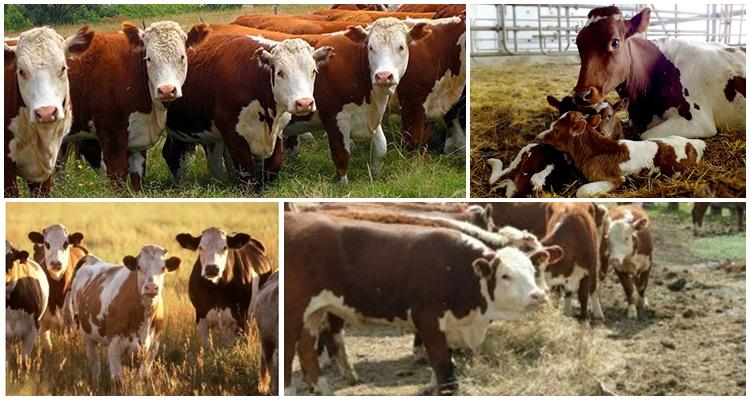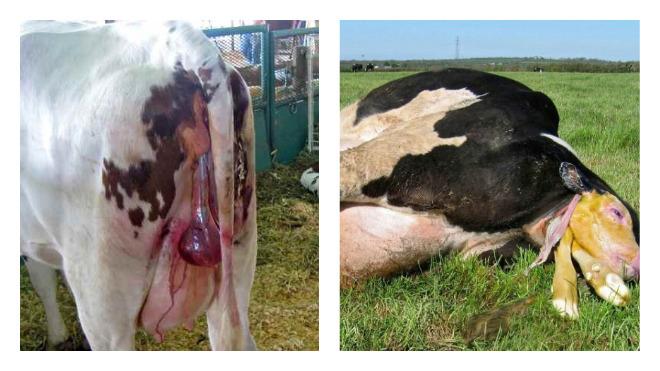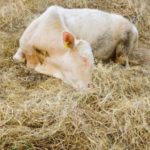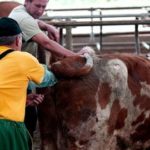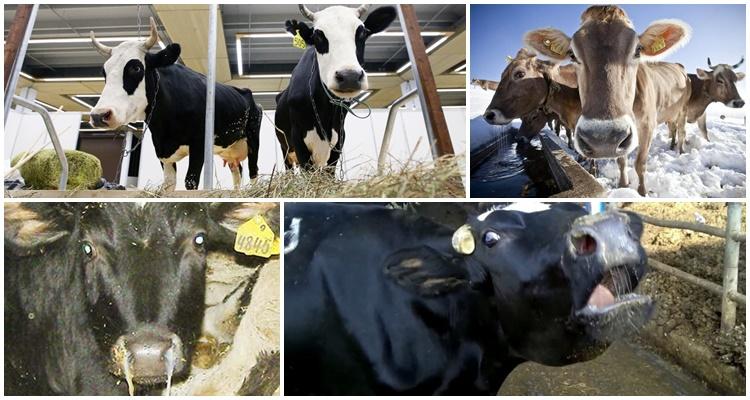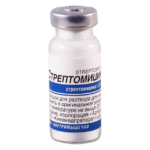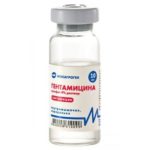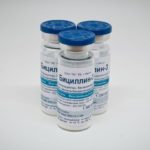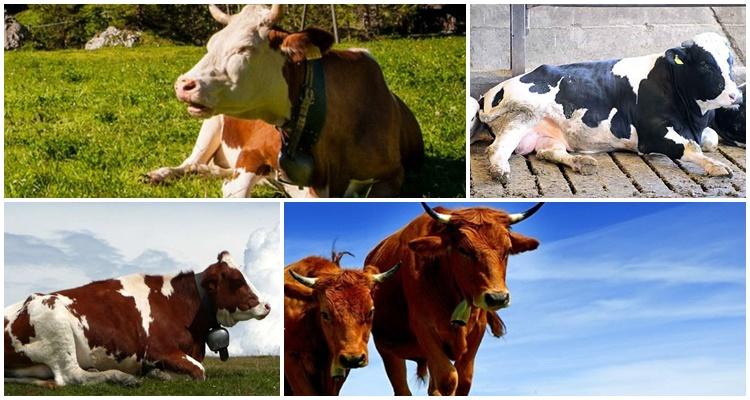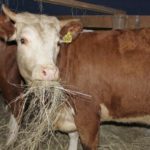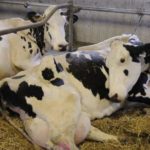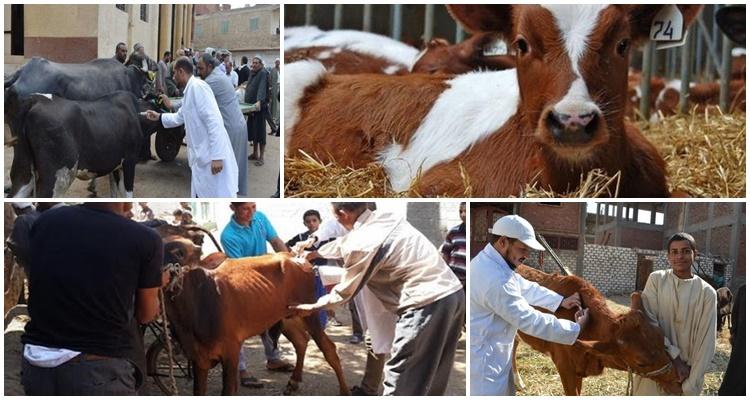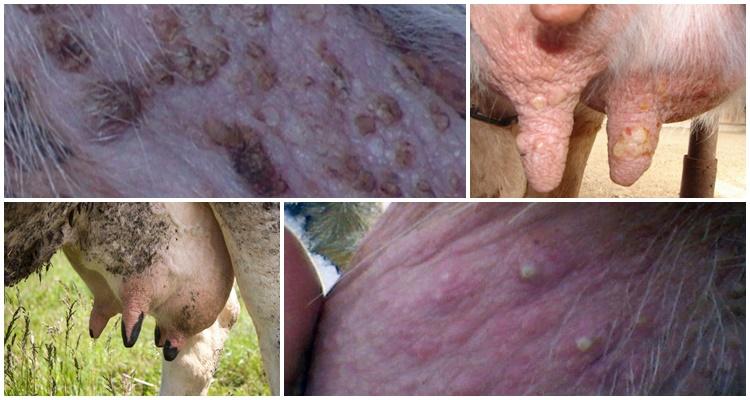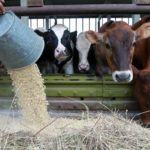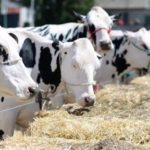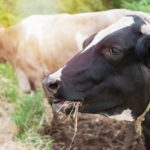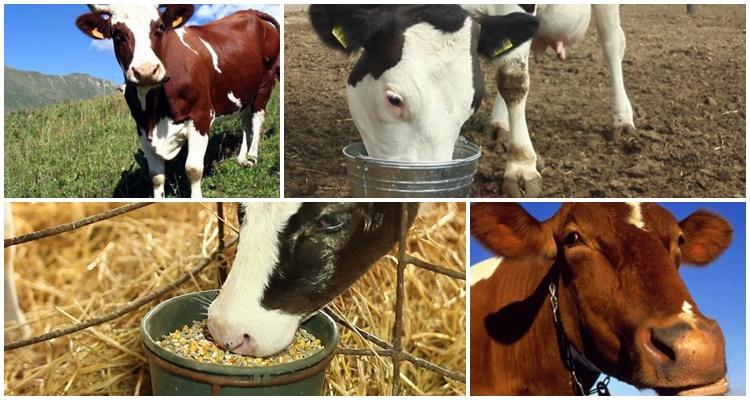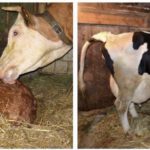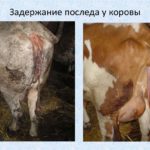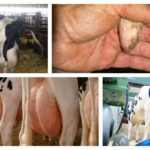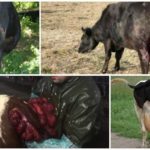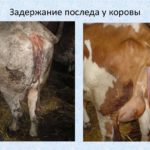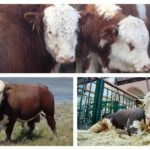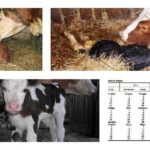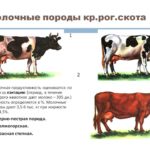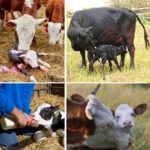Complications after giving birth in cows do not always resolve with obvious signs. A health problem is often identified by a lack of appetite. The symptom occurs due to physiological and chemical changes in the body, when infected with an infection. The method of treatment depends on the diagnosis. What to do if after calving the cow does not eat hay well and does not drink water is determined by the accompanying symptoms.
Causes and Treatments for Decreased or Lack of Appetite in Cows
Inability to digest hay or obstruction of the digestive tract are the main reasons why a cow has no appetite. They are often caused by infectious and non-infectious diseases.
Milk fever
Hypocalcemia, or paresis, is a nervous disease that occurs due to a lack of calcium in the body and low blood sugar levels. The condition causes paralysis of the hind limbs, swallowing muscles and tongue, as well as tympany. Loss of appetite with paresis is only a consequence of concomitant pathologies. Paralysis occurs after birth if the pregnant cow does not start. Main symptoms of the condition:
- weakness, the animal has fallen and cannot get up to eat;
- low temperature;
- wheezing breathing;
- drooling, the tongue falls out of the mouth.
Sometimes after calving, a cow’s legs tremble and her neck bends in the shape of the letter S. The disease is accompanied by loss of consciousness. Without treatment, the animal will die on the third day. But the introduction of medications at the initial stage alleviates the condition, and after 3 hours an appetite appears.
Paresis is treated with the following drugs:
- 10 percent calcium chloride - 400 milliliters;
- 40 percent glucose solution - 250 milliliters;
- 20 percent caffeine sodium benzoate - 15 milliliters;
- 25 percent magnesium sulfate - 40 milliliters;
- vitamin D2 - 2.5 million units.
The animal is also given first aid - they warm it up by rubbing it from the sacrum to the withers, put a heating pad on it and cover it with a blanket.
Eating the placenta
The digestion of ruminants is not designed to dissolve biological tissues. The shell creates a feeling of fullness in the stomach, and the animal loses its appetite. But the afterbirth does not move beyond the scar and does not regurgitate. The cow is thin and cannot eat.The afterbirth is eaten by cows that did not receive a balanced diet during pregnancy.
Signs of shell eating:
- lack of appetite;
- bloating;
- temperature increase;
- increased heart rate and breathing;
- colic;
- diarrhea;
- parts of the placenta and a lot of mucus in the manure.
The cow not only cannot eat, but also does not drink water. Eating of the placenta is indicated by its absence on the litter after calving and in the uterus as a result of examination. How to help a cow:
- do not feed for 24 hours;
- switch to easily digestible food with Glauber's salt, castor oil and gastric juice.
Digestion and appetite are stimulated with a solution of hydrochloric acid and pepsin - 20 grams of each substance per liter of water.
Endometritis
Inflammation of the uterine mucosa, or endometritis, is an infectious disease caused by coccus bacteria. The infection is accompanied by intoxication.
Symptoms of the pathology occur within three to five days after calving:
- bloody vaginal discharge;
- reduction in milk yield;
- loss of appetite;
- temperature increase;
- thickening of the walls, prolapse and absence of uterine contractions.
The cow suddenly refuses food and loses weight.
In the absence of necrotic processes, the condition is alleviated by washing the uterus with a solution of furatsilin. For a general strengthening effect, a ten-day course of placenta-based medications is prescribed.
Postpartum sepsis
The disease occurs after calving due to blood contamination with streptococci or staphylococci. The infection spreads throughout the body from a source in the genitals or uterus.
There are three types of sepsis:
- pyaemia - accompanied by the formation of secondary foci in other tissues and organs, such as metastases;
- septicemia - constant release of toxins into the blood from one source, rarely found in cows;
- Septicopyemia is a mixed type, characterized by the appearance of new foci and the entry of bacteria into the blood.
General symptoms of infection:
- heat;
- rapid breathing;
- lack of appetite;
- gastric atony;
- weakness;
- dryness, bleeding of mucous membranes;
- ulcerative rashes on the skin.
Treatment of sepsis:
- treat external foci of infection with antiseptic ointments, insert a tampon soaked in an antiseptic into the uterus;
- intravenously infuse glucose, ascorbic acid and calcium chloride once a day, methenamine twice a day;
- Inject intramuscularly the antibiotics Gentamicin, Streptomycin or Bicillin.
First aid for an animal is to ensure rest. The cow should be limited in diet, given light food - a mixture of bran and grass flour, sprouted oats, juicy root vegetables.
Vestibulovaginitis
If the cow has lost her appetite, has a fever, and has vaginal discharge after calving, inflammation of the uterine vestibule is suspected.
Two types of vestibulovaginitis often occur in cows:
- acute phlegmonous - muscle and submucosal tissue are filled with pus, which breaks to the surface in the form of abscesses, and necrosis develops;
- acute diphtheria - the vaginal mucosa after calving becomes gray, swells, thickens, dead tissue comes out with brown discharge, ulcers remain on the mucosa.
With advanced vestibulovaginitis, sepsis develops.
Help with illness:
- wash the external genitalia;
- rinse the vagina with a solution of manganese, Furacilin, Trypoflavin or soda;
- lubricate the inside or insert a tampon with ichthyol, streptocidal or syntomycin ointment;
- Cauterize external ulcers with iodine or lapis.
In case of necrosis, treatment with cephalosporin antibiotics - Cefotaxime, Ceftriaxone, Ceftazidime - is additionally prescribed.
Birth canal injuries
If a cow hunches over after calving, this is one of the signs of a postpartum complication caused by injury. The birth canal is damaged when a large fetus passes through or due to improper obstetric care. Often, tears in the external genitalia become infected. Injuries during calving occur in primiparous animals. With vaginal ruptures, the cow gives little milk, and it will be possible to milk her only after recovery.
Causes of damage:
- increased tone of the uterus with abnormal fetal position;
- post-inflammatory scars that tighten the pathways;
- an animal falling during contractions;
- active stretching of the calf with a poorly dilated cervix.
Breaks can be complete or incomplete. Incomplete rupture is suspected when there is bleeding from the external genitalia.
If the cow is humping, one may suspect superficial damage to the vaginal mucosa during calving.
A through or complete rupture is accompanied by hemorrhage into the abdominal cavity. If a calving cow has suddenly lost weight, is weak and drinks a lot of water, this is a likely sign of anemia as a result of blood loss. Tears can rarely be identified by palpation. More often, the injury is identified when the animal reaches the pathologist's table. Assistance is provided during childbirth - the edges of the wound are sutured manually. In case of extensive ruptures, the uterus is removed.
Udder diseases
Mastitis and edema are painful complications after calving that cause the cow to refuse to eat. Inflammation of the udder begins with hardening of the nipples and a decrease in the amount of milk. It contains clots and flakes. Pain occurs when squeezed.
Mastitis begins due to a bacterial infection in lesions on the skin of the udder. Acute forms are accompanied by high fever, general weak condition of the cow, loss of appetite and dehydration. Helping a cow after calving:
- increase the proportion of fiber in the diet;
- milk frequently;
- wash the udder with nettle infusion.
In case of acute mastitis, the animal is prescribed antibiotic treatment.
Ketosis
A metabolic disorder in which blood glucose levels decrease and ketones increase is called ketosis. Lack of sugar causes loss of appetite in cows after calving and in bulls due to poor nutrition. To awaken interest in food, animals are given sweet food:
- sugar beets;
- carrot;
- hay or haylage.
Sugar is added to the water. They also suggest chewing tea bags. If it is not possible to increase the glucose level, and the cow or bull refuses even water, they resort to medications:
- intravenous glucose solution;
- intramuscular solution "Tetravit";
Animals are also given propylene glycol and sodium lactate to drink.
Postpartum hemoglobinuria
The disease develops in productive cows between five and seven years of age, often after calving. The main cause of the pathology is spoiled food. Rotten vegetables and moldy hay lead to disruption of the intestinal microflora and fermentation. Instead of nutrients, toxins enter the blood, and anemia develops. Most of the hemoglobin is excreted in the urine.General poisoning of the body is accompanied by increased temperature and pathologies of internal organs. If within two days after calving the cow stops eating, gives little milk, and the urine turns cherry-colored, these are symptoms of hemoglobinuria. The condition is alleviated by changes in diet:
- exclude alfalfa and beet tops;
- Wheat bran is added to saturate the body with phosphorus.
To stop the loss of hemoglobin, the cow is given a soda solution to drink. Glucose and caffeine are administered intravenously.
Prevention measures
Loss of appetite after calving means the beginning of a pathological process in the cow’s body. Therefore, prevention is aimed at preventing specific diseases:
| Pathology | How to prevent |
| Eating the placenta | Be present at calving, monitor the release of the placenta and immediately remove the placenta. |
| Hypocalcemia | Do not overfeed during the start-up period, increase the proportion of hay and reduce the amount of concentrates in the diet, and let the pregnant cow go for a walk. |
| Paresis, ketosis | A week before calving, feed with a sugar solution - 300 grams of sugar per 1 liter of water. |
| Endometritis | Avoid drafts and keep stalls clean. |
| Sepsis | Saturate the diet with calcium and potassium as much as possible before calving - feed alfalfa, soybean meal, and silage. |
| Vestibulovaginitis | Deliver births in compliance with disinfection rules and change bedding before calving. |
| Udder diseases | Wash your hands and wash the udder before and after milking, protect from overheating and hypothermia. |
| Hemoglobinuria | Control the quality of feed. |
How to increase a cow's appetite:
- drive away worms twice a year;
- give daily 2 kilograms of hay, 1 kilogram of sprouted wheat;
- add propylene glycol or glycerin to energy drinks - 100 grams per day during pregnancy and 200 grams after calving.
To ensure that animals eat well and a lot, food is given 2-3 times a day. The diet should contain vegetables, concentrates and high quality hay. The balance of vitamins and minerals is selected according to the productivity of the cow and according to the recommendations of the veterinarian.

